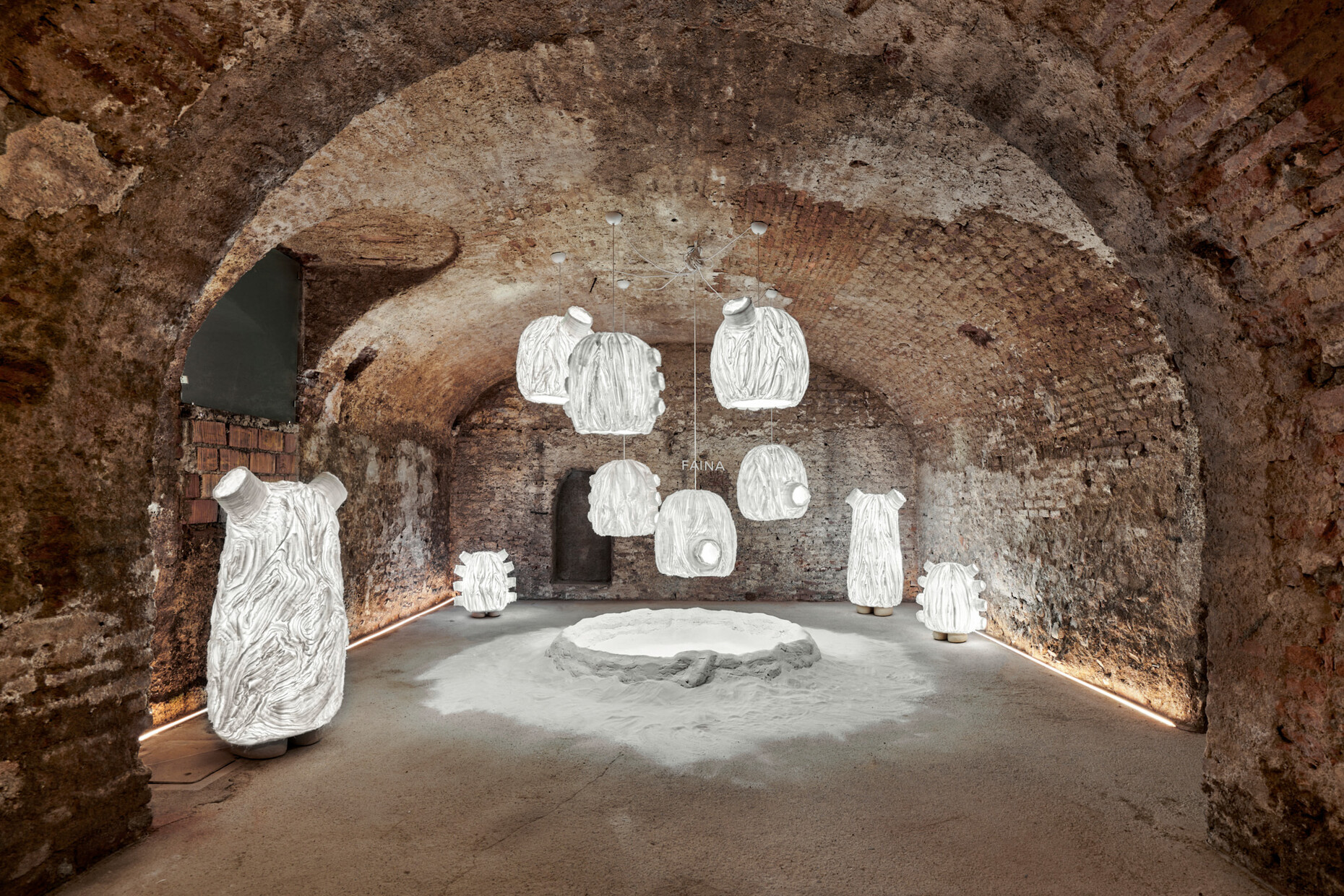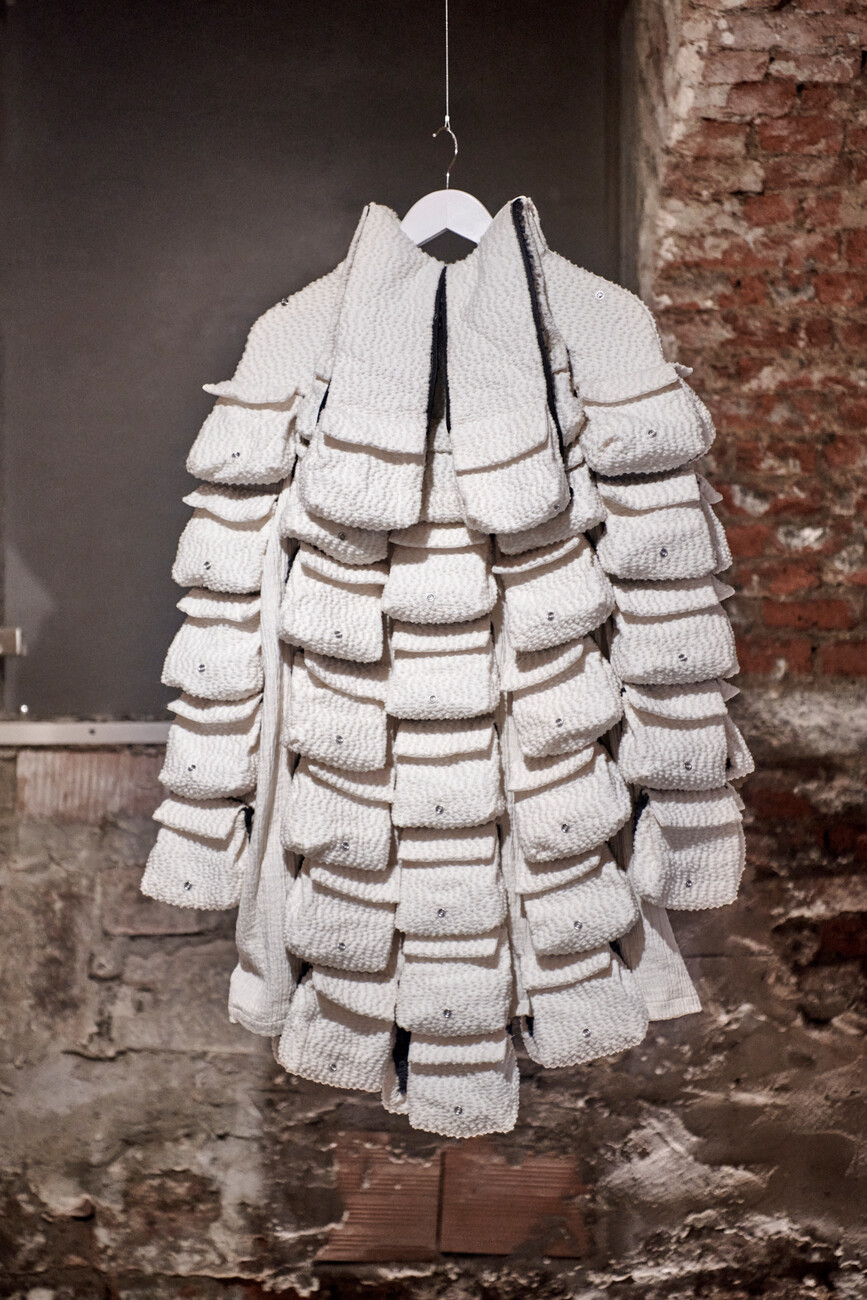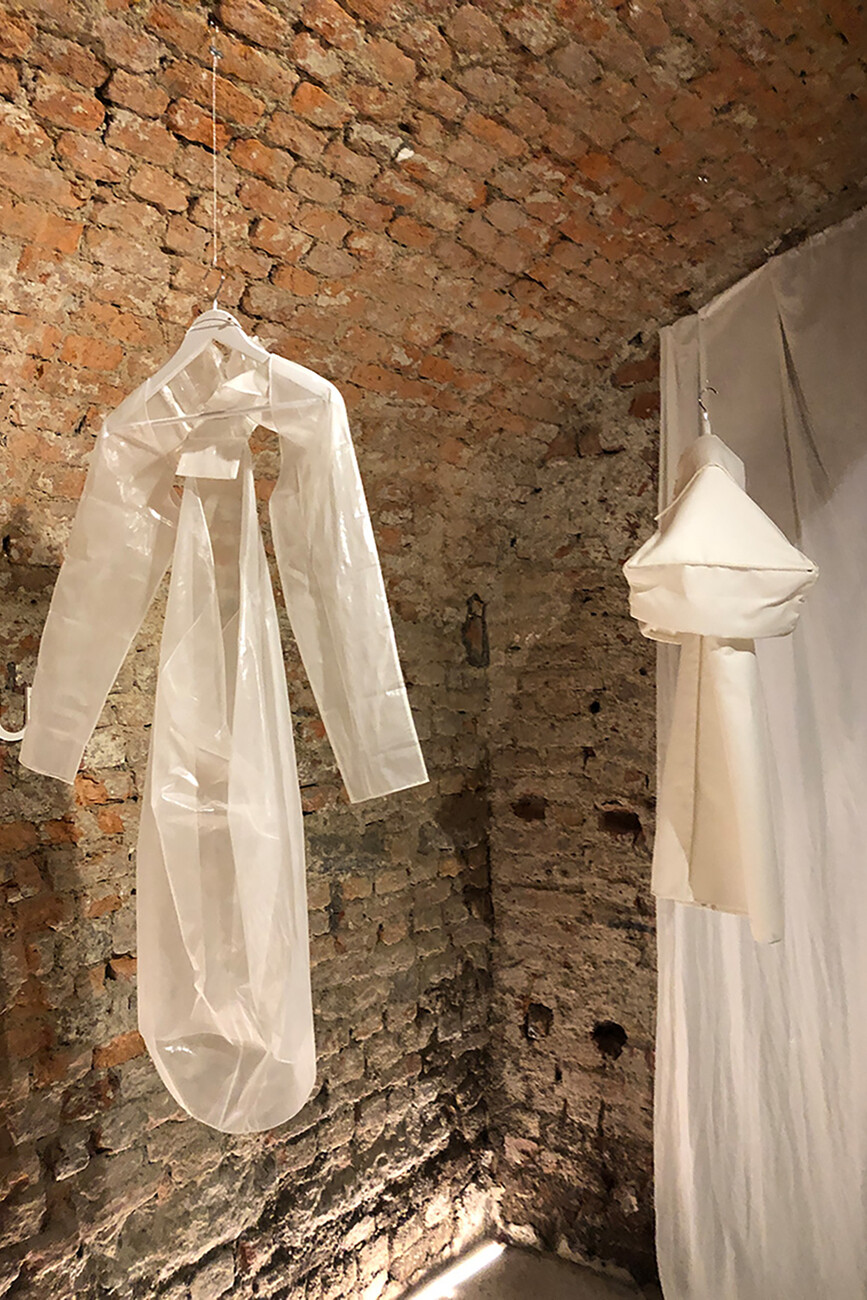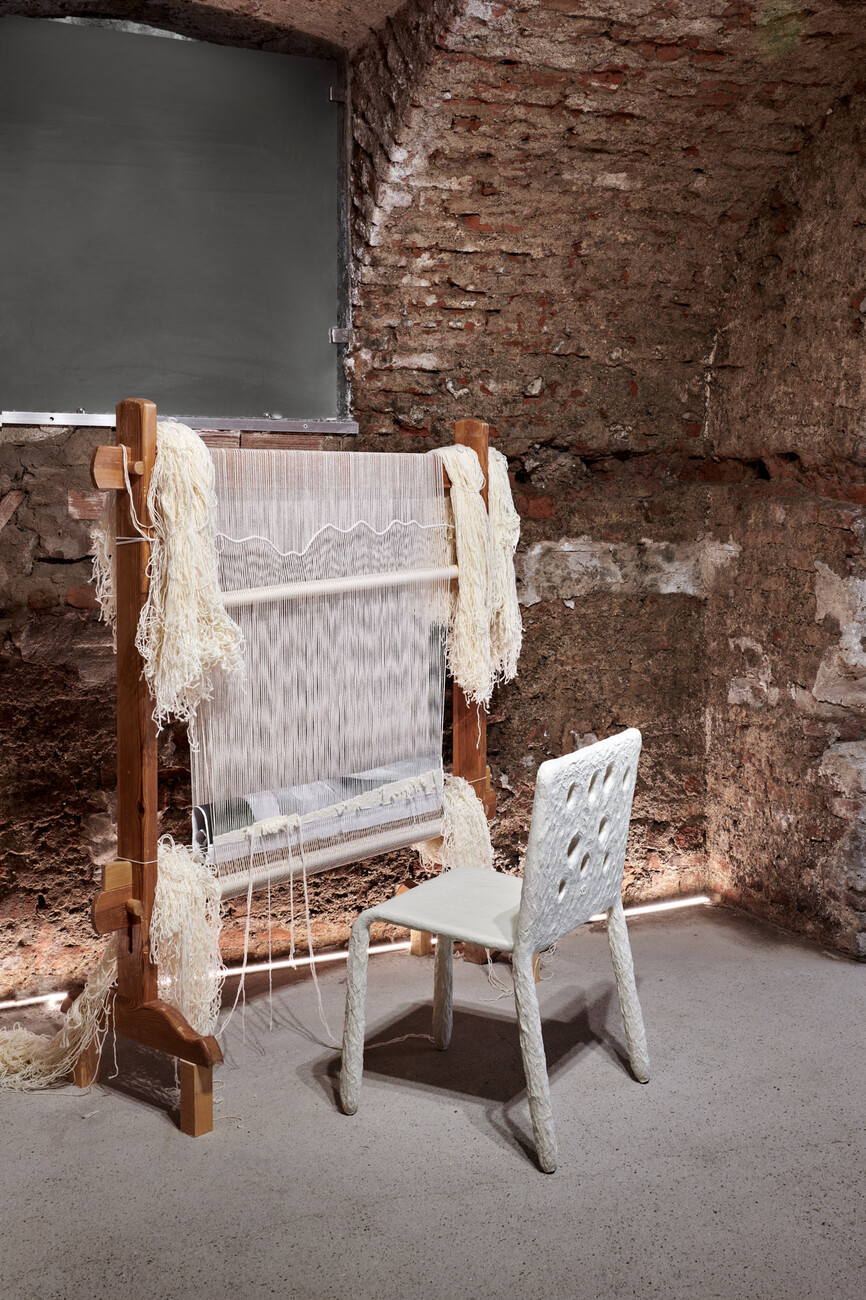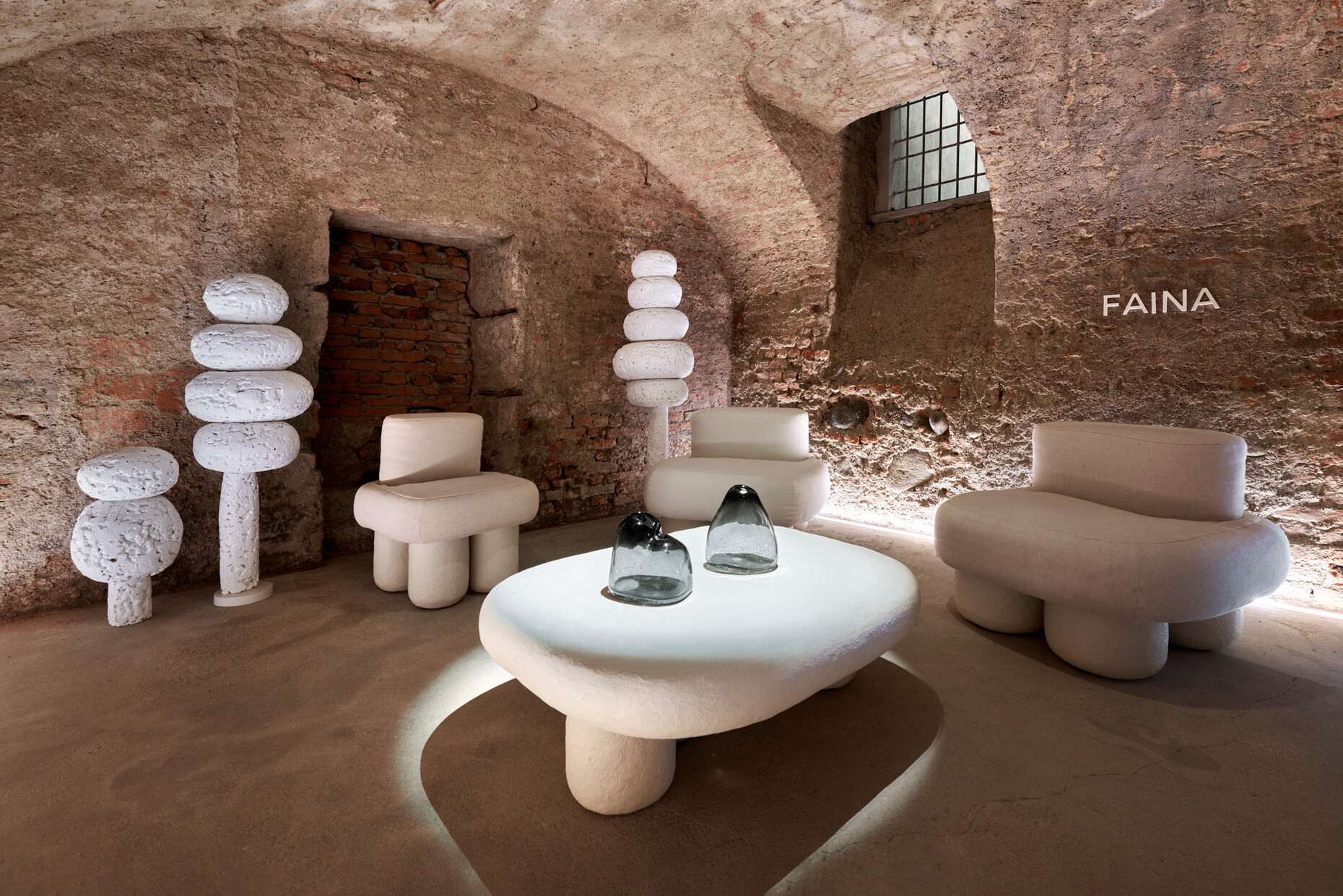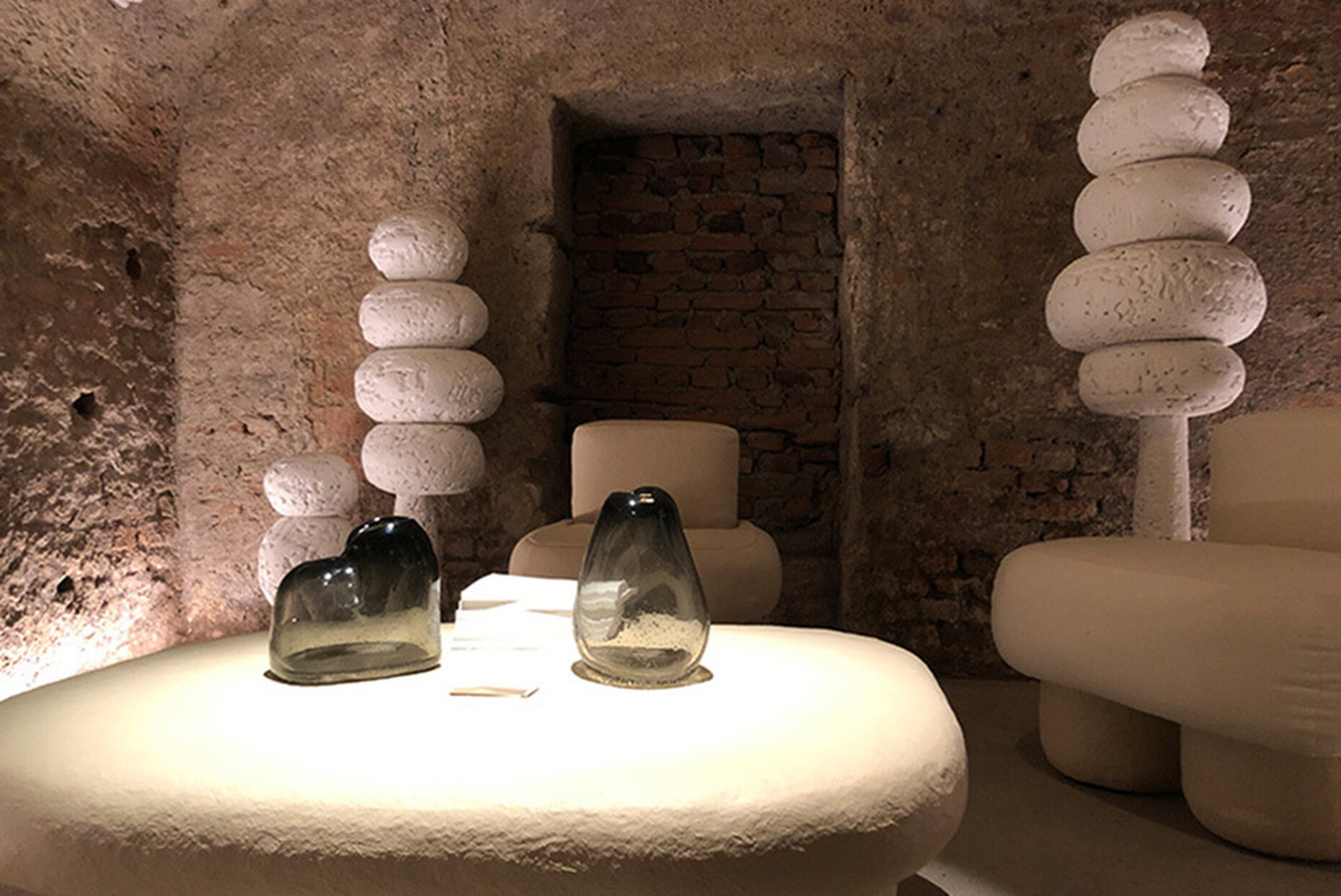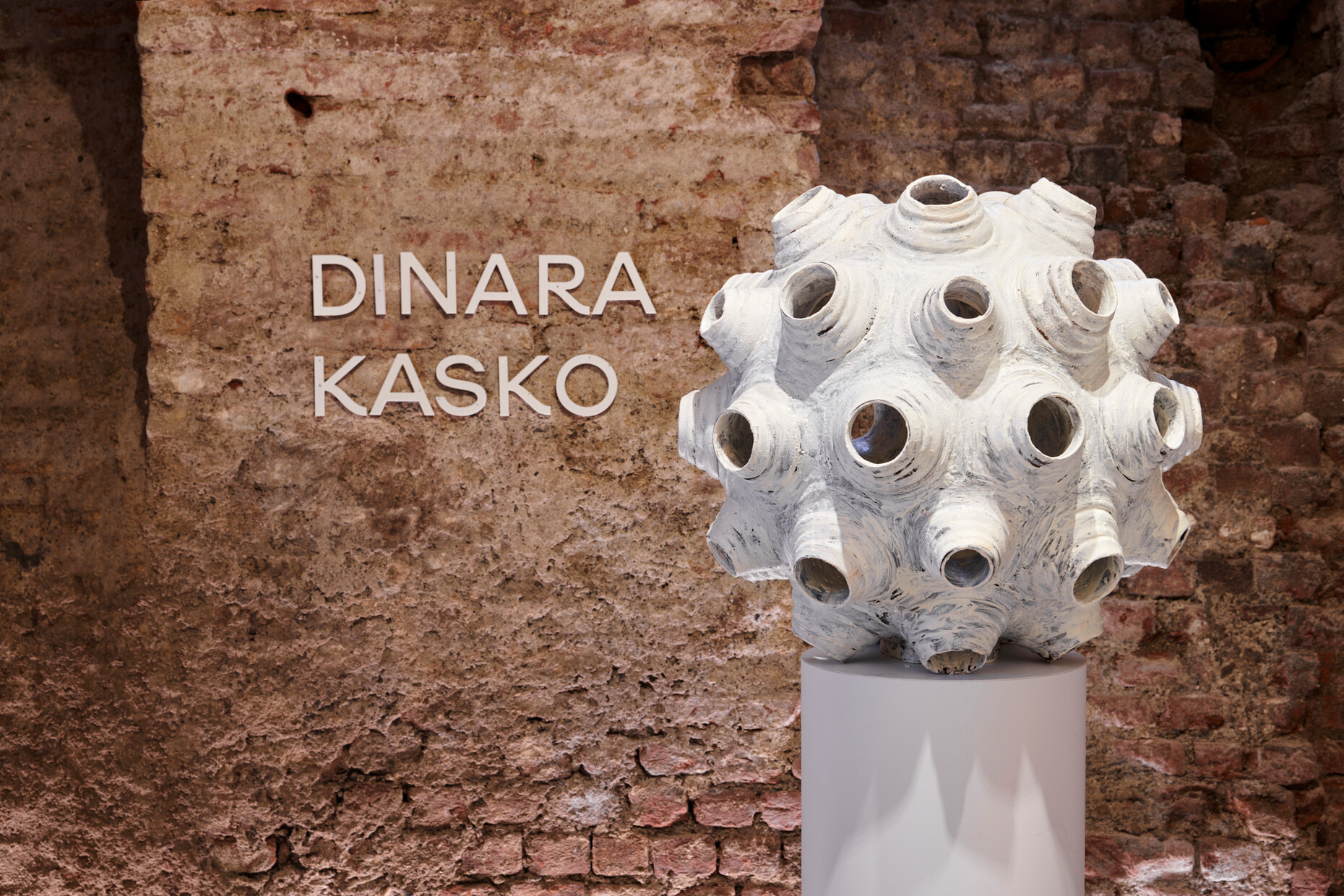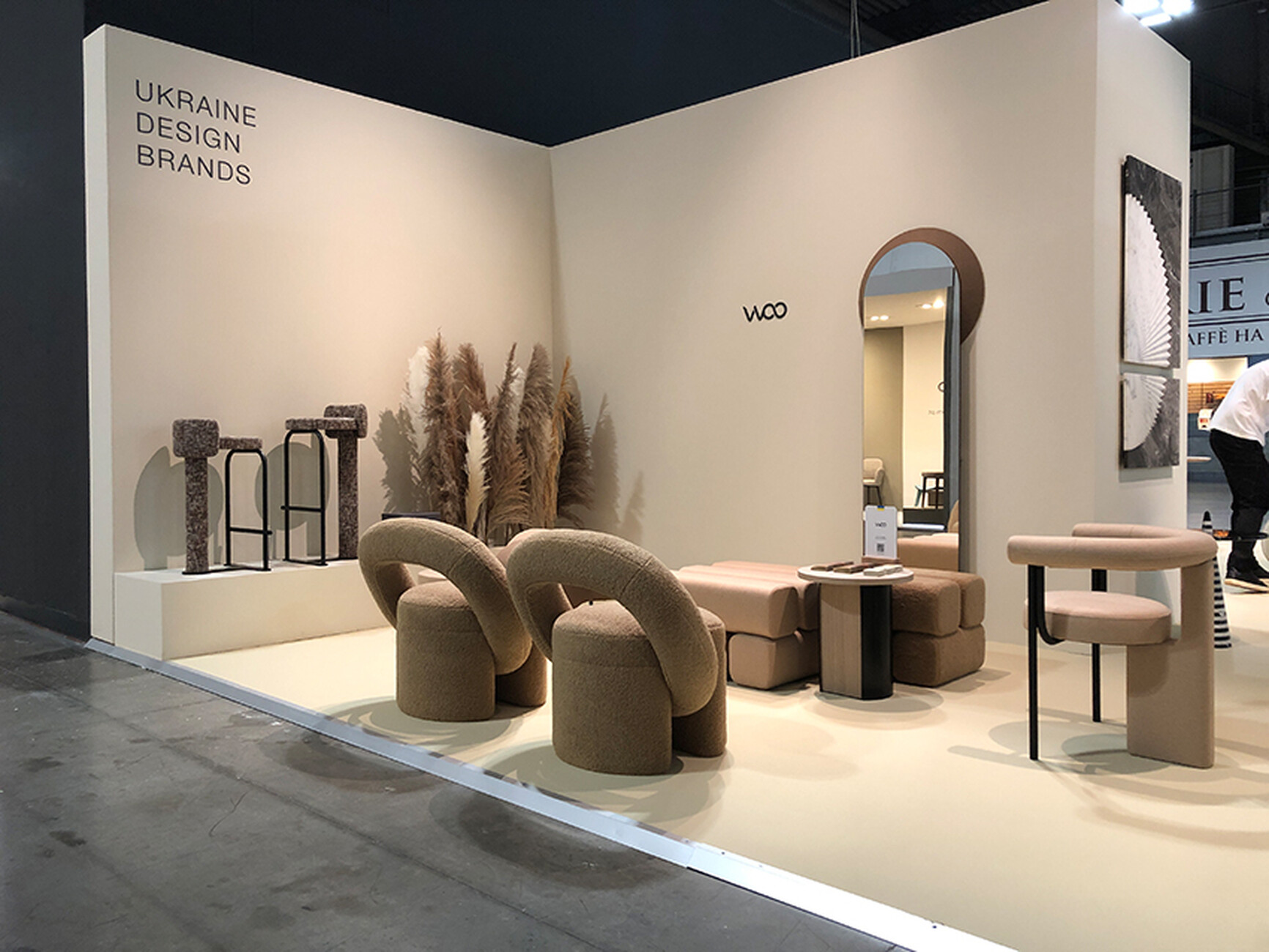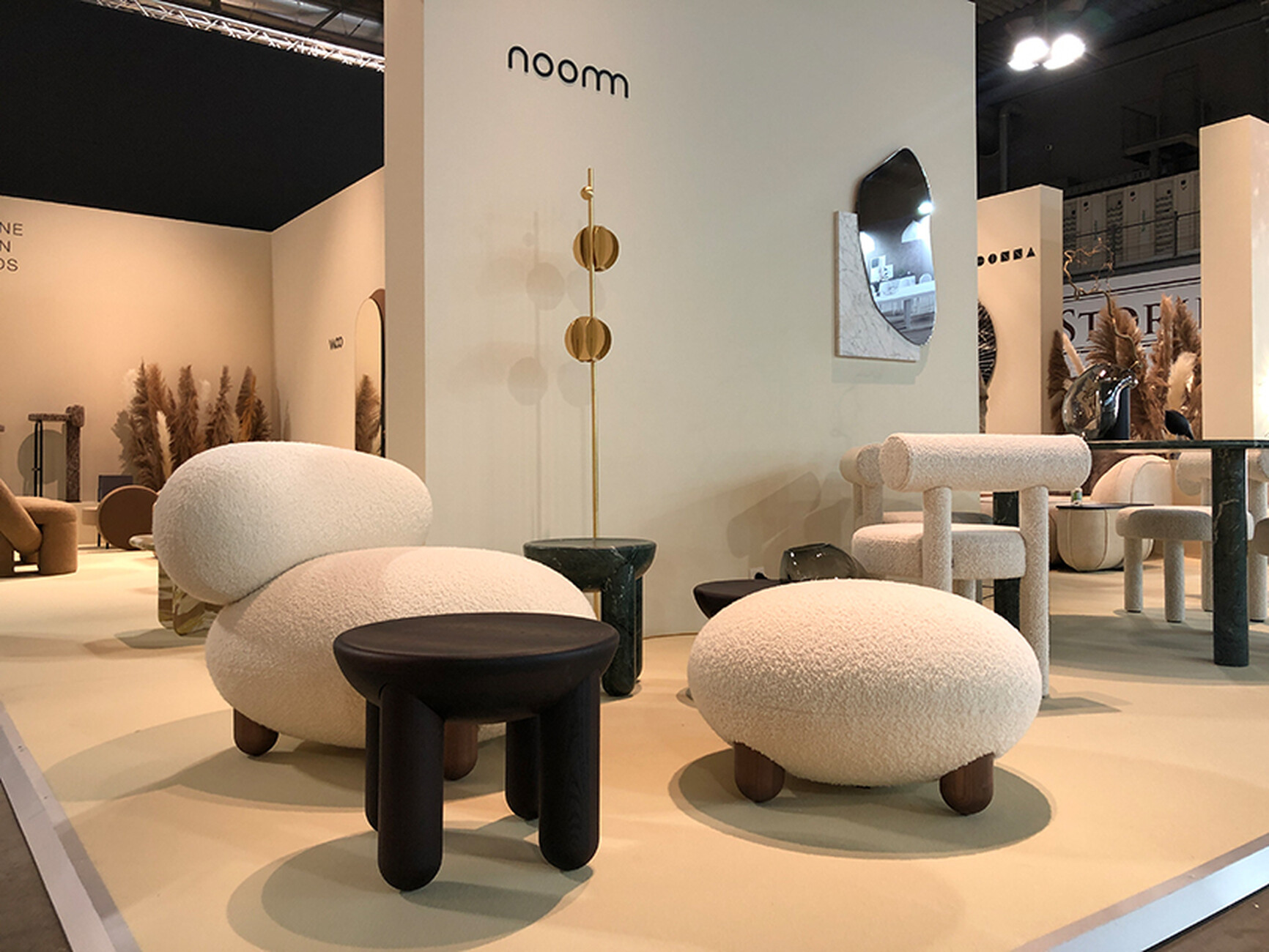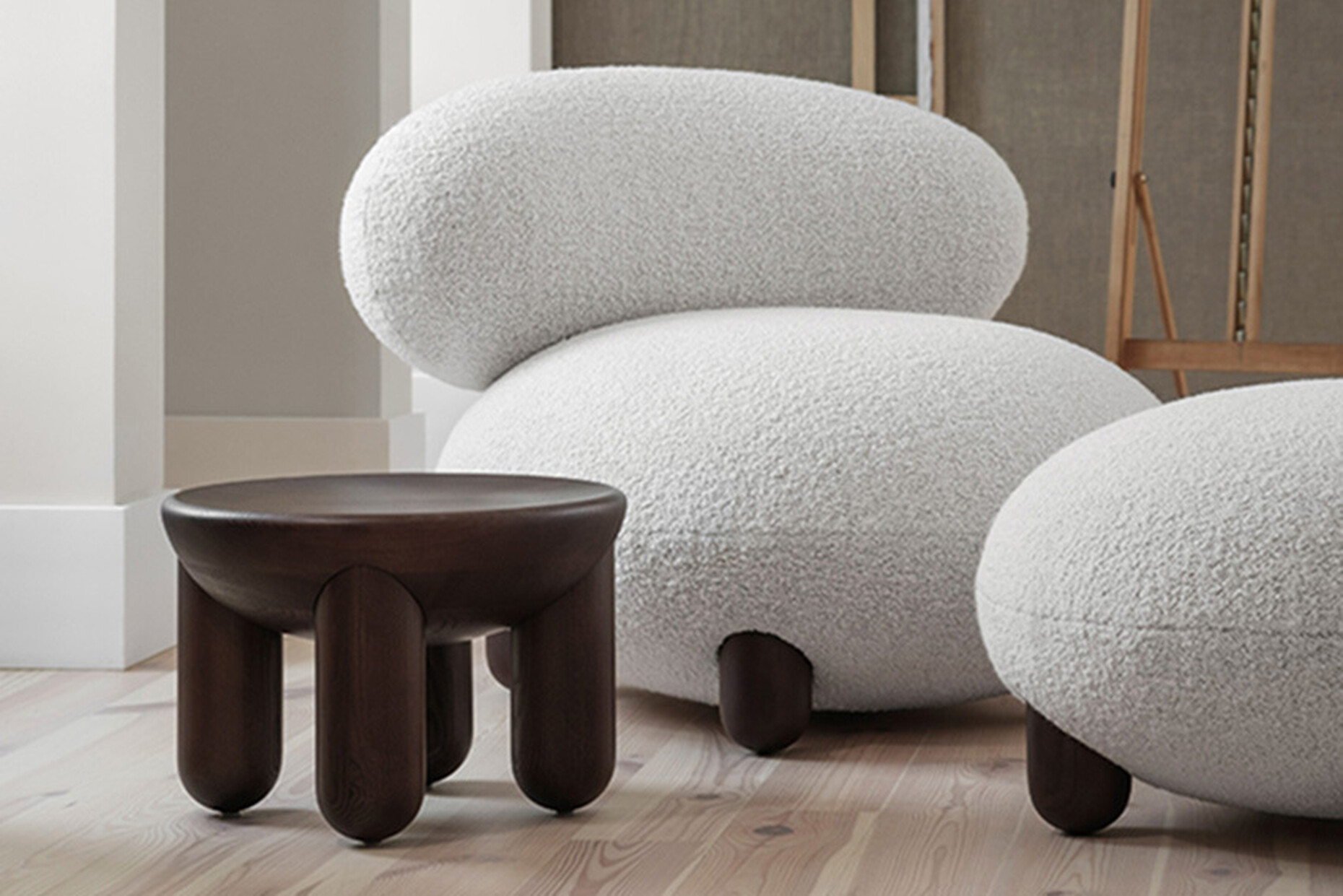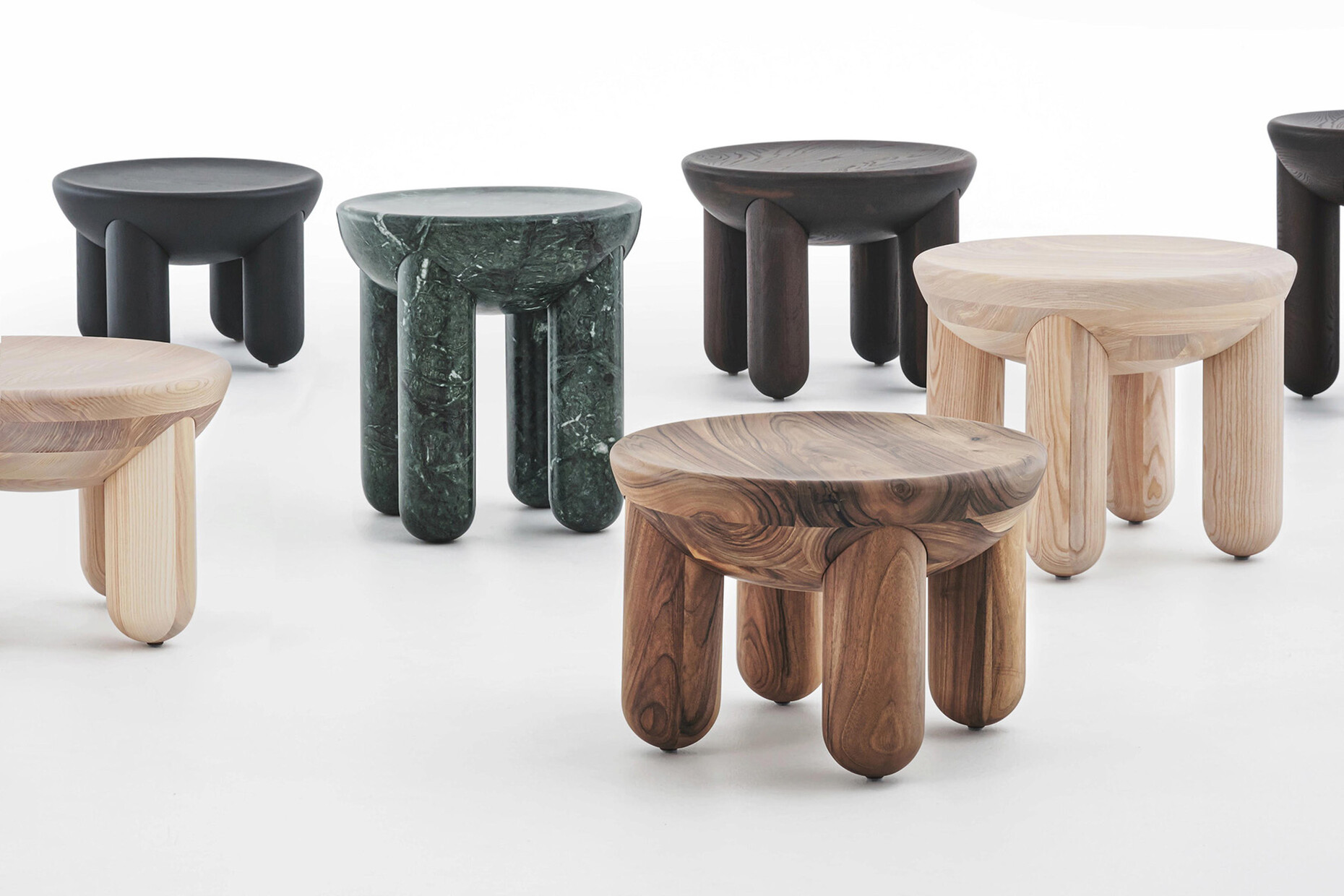REVIEW – MILAN DESIGN WEEK 2023: CONTINUUM
Future Use
Despite many accompanying programmes and design talks, despite all the commitments to sustainability and transformation, furniture trade fairs belong to a world in which everything that might have to do with war, crisis and problems is gently obscured with a quiet sigh. How are Ukrainian designers and brands presenting themselves in Milan more than a year after Russia's invasion of their country began? And what are they showing in that temporary world of beautiful and often expensive interior design? “How did you come up with that idea?”, colleagues asked me when I briefly told them what I was looking for in Milan this year. In order to find out more about design and crafts from Ukraine, I had to do a bit of research beforehand. Platforms and blogs from the UK made some short announcements, and then there was the small but effective trade fair presence of a number of Ukrainian manufacturers in far-flung Hall 24.
So “knowing where to look” was really the motto for experiencing things Ukrainian during the Milan Design Week 2023. A good 95,000 people flocked to Milan University's Cortile della farmacia to relax while swinging in the middle of the Swing installation, which the architect and Triennale director Stefano Boeri created with the support of Amazon. In all seriousness, this was about the “extra time we gain through online shopping”, but also about sustainable products and reforestation efforts in Italy. It was easy to move from this unadulterated, relaxed world to another where there was no gloom and doom at all. All you had to do was walk to the other side of the street, because opposite the main entrance of Ca'Granda, the former Milanese hospital founded by Francesco Sforza in 1456, at Via Festa del Perdono 7, Contïnuum was to be found, a collective exhibition conceived and built by the architect and designer Victoria Yakusha.
Behind an inconspicuous wooden door, a steep staircase leads down to the cellar of a traditional Milanese home. Those who walked down the stairs certainly experienced one of the most impressive presentations of the 2023 Salon. Victoria Yakusha, born in Dnipro (which was still called Dnipropetrovsk at the time of her birth) is actually no longer just an insider tip. After completing her master's degree at a local architecture college, she continued her studies at INSA in Strasbourg. In 2009 she founded her own architecture and interior design firm, which today has twelve employees. She describes her style as “concise” and “emotionally pure”. Many renowned magazines, blogs and portals have already had articles about her. When Ukraine was attacked, she was in Milan working on her exhibition Chornozem. All of the objects in her collection were black at that time: mourning as a result of the attack and the further escalation of the conflict with Russia, which had actually been resulting in deaths and injuries on Ukrainian territory for years. The objects in the Contïnuum exhibition are now mainly in white. According to the exhibition brochure, the neutrality of white forces other colours to reveal themselves. At the same time, white also stands for purism, containing all other colours.
Victoria Yakusha brought together five companies with Ukrainian roots for Contïnuum: fragrance, fashion, food culture, weaving, furniture, lighting and accessories were all presented. The focus was on questions of identity and self-assertion, as well as on how local design traditions can be preserved and continued using contemporary means. Each of the five companies committed itself to a “cultural code” and the “spirit of freedom”, as well as to “respect for the earth”.
The perfume Serpanok by Vlad Zvarych, a pioneer of the Ukrainian perfume scene with his brand Arboretum, was noticeable right at the entrance of the exhibition. According to the designer, the fragrance was inspired by the “mist” that is so typical of Ukraine's landscape. Zvarych has been passionate about scents and smells since childhood, collecting them and creating the Museum of Ukrainian Postwar Perfumes. The sense of smell, he predicts, will never exist in digital form. “You can only sense it in life itself.” He sees his latest creation as being “the beginning of something radically new”.
A few steps away, Irina Dzhus, a designer and conceptual artist who founded her label in 2010, exhibited part of her fashion collection. One of her dresses, made of bags, might make you think of something created by the artist Franz Erhard Walther. That really falls short of the mark, however, as Dzhus' innovative patterns have made her internationally known. Her brand stands for avant-garde yet useful fashion that is changeable and versatile. Like most of the contributors to Contïnuum, Dzhus played a significant role in Kiev's vibrant pre-war scene, which was said to have long since surpassed the Berlin subculture, for example.
Originally conceived as being only for women, many of Dzhus' pieces are unisex in both aesthetics and fit. Internationally renowned artists wear her designs, the most important fashion magazines and blogs feature her work, and she works for well-known film productions. Her products are sold in selected concept stores and online. Irina Dzhus has had to flee her home country due to the war, and now she commutes between Warsaw, Paris and Berlin. Transit is the name of her current autumn/winter collection, some pieces of which were shown and demonstrated in Milan. With her fashion and the materials she uses, she not only broaches the issue of multiple uses, but also the “drastic changes that all Ukrainians may be experiencing without being able to influence them”. She demands that sustainability should no longer only be talked about, but that new solutions for ecological questions should be tackled proactively, and that concrete issues be dealt with now instead of being left for the distant future.
Such a practice is a central theme of the work of the five designers who exhibited here together. Weaver Halnya Shiposha works with wool, cotton and other natural fibres to create unique yet complex products, and has been making carpets and tapestries for over 30 years. Her products are shown in several Ukrainian galleries as well as in private collections.
The small village of Reschetlyliwka in central Ukraine has long been known for folk art in weaving and embroidery. With its current designs, the studio Solomia RCS continues this tradition in the village, and in workshops visitors were able to experience insights into weaving.
Victoria Yakusha was represented by pieces from her own furnishing brand Faina, which she founded in 2015. At the end of the exhibition space lamps from her new Sluhach collection were hung from the ceiling or stood on the floor. The designer talked about the soulfulness of her objects. Is this reminiscent of the Icelandic worship of nature, in which the world of trolls and elves play a role? In Yakusha's work, the reference to nature in architecture and design is central; at the same time, almost all of her designs are linked back to traditional objects of Ukrainian culture. Today she lives and works mainly in Brussels. Whenever possible, she travels to Ukraine to experience a special bond that begins as soon as she steps on native soil. This may sound esoteric, and it probably is, but at the same time it serves as a source of inspiration for the designer. Sluhach is derived from the Ukrainian word for “listening”. The lamps wrapped in muslin with tube-like protrusions look like small living creatures. Depending on the design, they listen to ideas, dreams, desires, the fate and state of mind and body of their users. And best of all, no sensors, no AI or other eavesdropping technology is required – just a little imagination. For the floor lamps as well as for her furniture, Yakusha uses a material called Ztista, which means “made of dough” in Ukrainian. Faina's “dough” is made of of cellulose, clay, hemp fibre, wood chips and a biopolymer. The mixture of materials resembles the traditional plaster of Ukrainian buildings, which is supposed to protect against both the cold and overheating. The craftsmen with whom Faina works use the material to create surfaces whose handmade quality is evident. The collection even includes its own colour palette, as can be seen in the material catalogue that Victoria Yakusha has created.
“Come over to the next vault”, says one of Contïnuum's employees. There it's possible to take a look at Faina Design's Movchun furniture collection: Big, voluminous objects, with matching lamps, vases and objects from some of Yakusha's other collections. The pieces are made by craftsmen in Ukraine, in parts of the country that are rarely directly affected by the war. Movchun also uses natural materials: The frame is made of recycled paper fibres, then covered with the tried-and-tested Ztista dough, while the cushions are made of natural rubber and the textile covers are either made of hemp or from recycled cotton T-shirts.
Moving one room further into the depths of the cellar brings visitors to a large sculpture standing on a counter, a modular sculpture made of chocolate that consists of three different components. It was created by Dinara Kasko from Kharkiv, who, after studying architecture and working eight years as an architect and designer, turned her hobby of baking into a profession in 2015. It started with architectural cake moulds. Kasko now works with digitally generated moulds and creates new disruptive methods for the confectionery trade. She designs silicone baking moulds on the computer and prints them out on a 3D printer, and teaches aspiring confectioners digitally, constantly developing new moulds and recipes. Kasko is also in demand internationally as a consultant. “Baking,” wrote the New York Times in a detailed portrait of Dinara Kasko in 2019, “is an exact science that requires finely calibrated scales and thermometers and obsessive trial and error using ratios of liquid to dry matter, fat to sugar.” Kasko had to flee her hometown of Kharkiv at the very beginning of the war, leaving her house, studio and equipment behind. Deutsche Welle showed her video, reporting on her flight to the western part of Ukraine. Today she lives and works in the north of England. She brought a swirled form to Milan, which she developed with an AI platform for image generation called Midjourney. The recipe included pandan leaves. She distributed 550 cakes at the exhibition. And using Midjourney she also created a series of virtual cakes for British Coronation celebrations, which she presented to her huge Instagram fan base.
At the Salone del Mobile in Hall 24, several exhibitors presented themselves at a joint Ukrainian stand. Many well-educated, middle-aged designers with international portfolios have been present at fairs and events for a long time. Some have joined forces in the Diza Collective designer group, but men, in particular, can no longer leave the country because of the war. Designer Kateryna Sokolova is co-founder of the label Noom; she studied in Kharkiv and at the Burg Giebichenstein Art Academy in Halle. Her work includes furniture and luminaires for Ligne Roset, among others, and the ring-shaped AeroTwist loudspeaker. With Noom she showed new variations of her furniture. Designer Dmytro Kozinenko from Simferopol, who also belongs to Diza and was unable to come to Milan, works mainly for Woo Furniture in Kiev. The young label has switched its production to smaller pieces that are produced in Ukraine and can be easily transported, which is important as all the young labels are dependent on exports. When the invasion of Ukraine began, Kozinenko fled to the countryside to live with his parents. Stacked firewood he saw there inspired him to create Drova, a stool or seating element made of four or six elements. With the Play upholstered armchair, Kozinenko has created an object that will be remembered for its unusual shape. In several of his designs he is successfully able to move from playful formality to new typologies.
In the history of design, there are many examples of designs that have responded to war and crisis. It takes peace and stable political conditions to be able to understand, appreciate and use them, however. Currently, many Ukrainian designers are succeeding in designing counter-worlds that are not merely an escape from the world, but that instead point to peaceful usage in the future.
